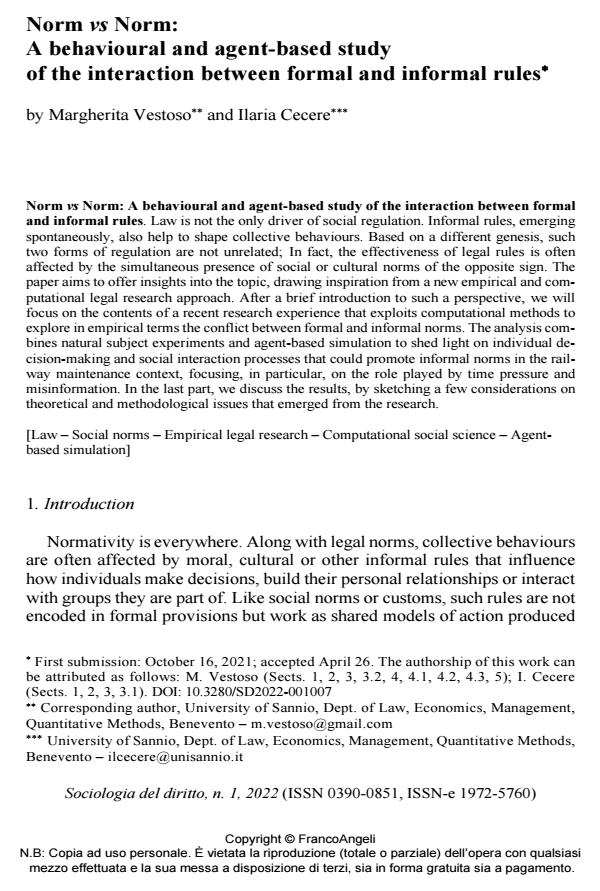Norm vs Norm: A behavioural and agent-based study of the interaction between formal and informal rules
Journal title SOCIOLOGIA DEL DIRITTO
Author/s Margherita Vestoso, Ilaria Cecere
Publishing Year 2022 Issue 2022/1
Language English Pages 20 P. 153-172 File size 276 KB
DOI 10.3280/SD2022-001007
DOI is like a bar code for intellectual property: to have more infomation
click here
Below, you can see the article first page
If you want to buy this article in PDF format, you can do it, following the instructions to buy download credits

FrancoAngeli is member of Publishers International Linking Association, Inc (PILA), a not-for-profit association which run the CrossRef service enabling links to and from online scholarly content.
Law is not the only driver of social regulation. Informal rules, emerging spontaneously, also help to shape collective behaviours. Based on a different genesis, such two forms of regulation are not unrelated; In fact, the effectiveness of legal rules is often affected by the simultaneous presence of social or cultural norms of the opposite sign. The paper aims to offer insights into the topic, drawing inspiration from a new empirical and computational legal research approach. After a brief introduction to such a perspective, we will focus on the contents of a recent re-search experience that exploits computational methods to explore in empirical terms the conflict between formal and informal norms. The analysis combines natural subject experiments and agent-based simulation to shed light on individual decision-making and social interaction processes that could promote informal norms in the railway maintenance context, focusing, in particular, on the role played by time pressure and misinformation. In the last part, we discuss the results, by sketching a few considerations on theoretical and methodological issues that emerged from the research.
Keywords: Law - Social norms - Empirical legal research - Computational social science - Agent-based simulation
Margherita Vestoso, Ilaria Cecere, Norm vs Norm: A behavioural and agent-based study of the interaction between formal and informal rules in "SOCIOLOGIA DEL DIRITTO " 1/2022, pp 153-172, DOI: 10.3280/SD2022-001007